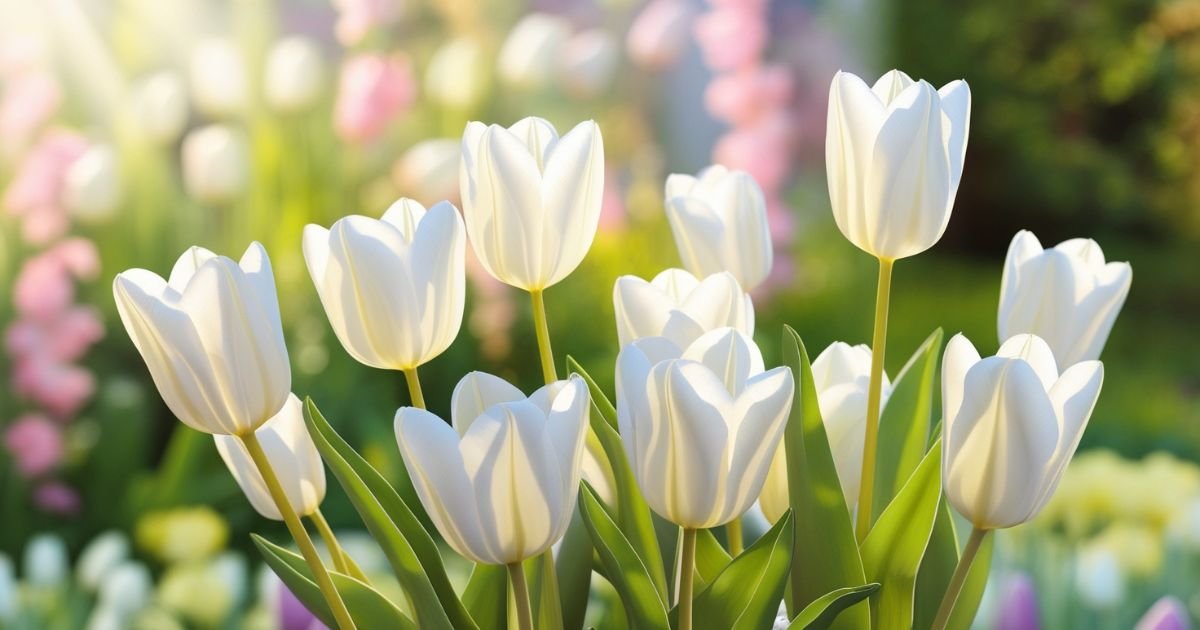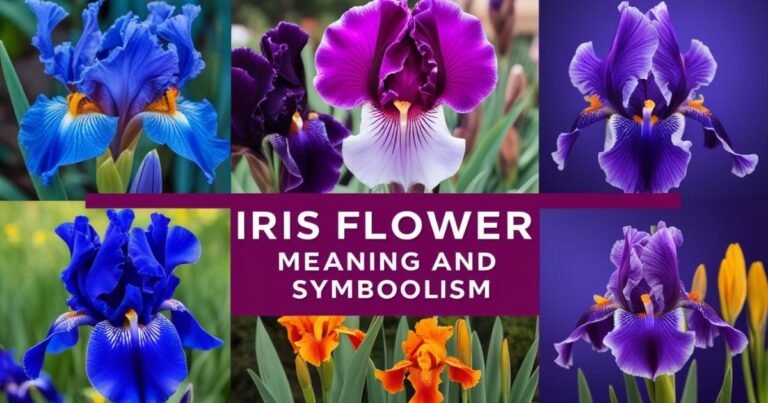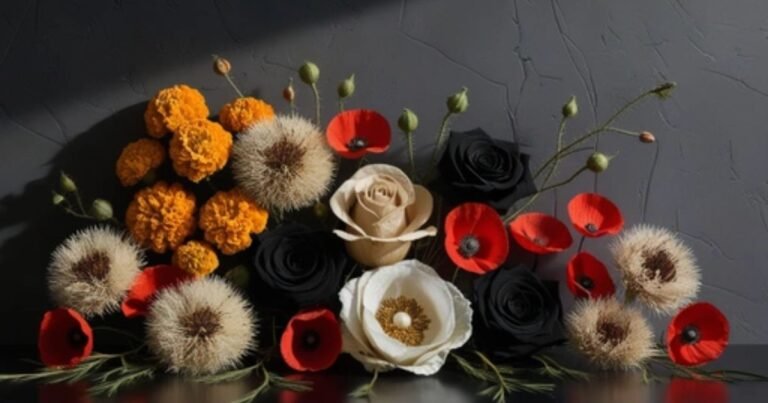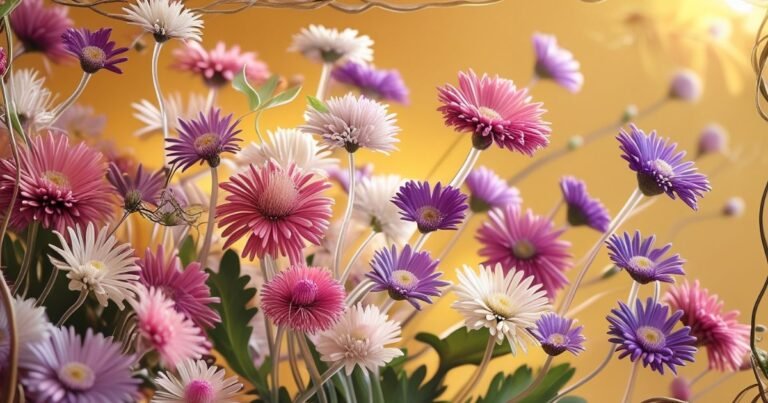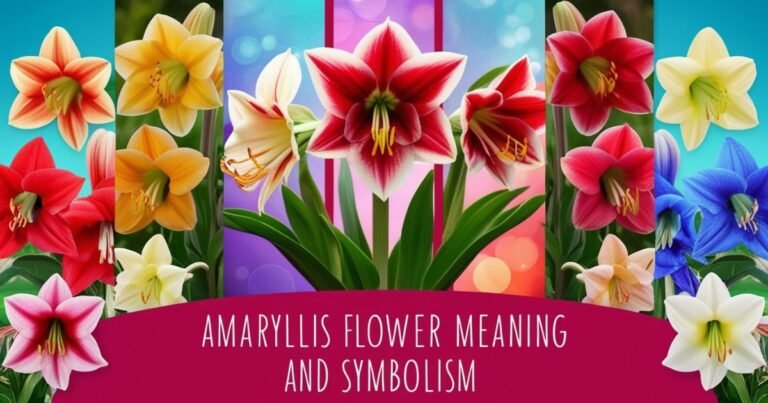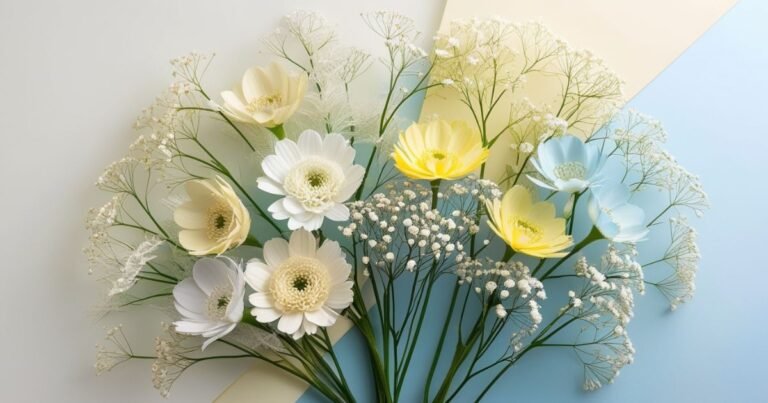White Tulips Meaning – Symbolism And Significance
The white tulip is more than just a pretty bloom it’s a timeless symbol of purity, peace, and elegance. Known for its calm beauty, the white tulips meaning reflects love, hope, and new beginnings across many cultures.
Whether used in weddings, sympathy bouquets, or spring gardens, these flowers express feelings words often can’t. Their pure color represents innocence, serenity, and spiritual growth, making them a favorite for every heartfelt occasion.
Truly, the symbolism of white tulips reminds us that simplicity can carry the deepest emotions.
Historical Background
Tulips are among the world’s most loved spring flowers, but their story goes far beyond the colorful tulip fields of the Netherlands. Originating from Central Asia, these blooms were first cultivated in Turkey around 1000 AD, symbolizing elegance and beauty.
The word tulip comes from the Turkish term for turban, inspired by its distinct shape. Later, botanist Carolus Clusius introduced tulips to Europe in the 16th century, sparking a craze that led to the famous Tulip Mania of the 17th century.
Today, tulips remain iconic for their rich flower symbolism, cultural history, and stunning floral varieties loved worldwide.
White Tulips Meaning
White Tulips Meanings will be discussed according to different occasions such as:
- Weddings
- funerals
- Apologizing
Weddings
Radiate an enchanting blend of grace and purity, with floral arrangements beautifully enhancing the festivities. These blooms encapsulate the essence of love, symbolizing not only the bride’s innocence but also the groom’s unwavering devotion.
Each petal whispers secrets of commitment, inviting couples to cherish their unique journey together.
As spring flowers burst into bloom, they serve as a poignant reminder of fresh beginnings. The vibrant colors and striking designs inspire reflections on promises made before family and friends, encouraging couples to embrace their shared dream.
This delicate beauty effortlessly weaves a tapestry of hope, ensuring that every moment is steeped in meaning and intention for a bright future ahead.
Funerals
In their solemnity, become sacred spaces where love and memory intertwine. They offer a moment for reflection not just on loss but also on the shared joy of life’s fleeting moments. Each tribute serves as an intimate tapestry, weaving together stories, laughter, and sorrow.
Beyond mere rituals, these gatherings foster forgiveness and understanding among those left behind. In confronting grief together, attendees often discover newfound connections; the pain of loss can pave the way for healing dialogue.
This collective experience reminds us that even in farewells, hope peeks through uniting hearts across boundaries we once thought insurmountable.
Apologizing
It is more than just admitting fault; it’s a heartfelt bridge that connects two souls seeking healing. When you approach someone you’ve hurt with sincerity, you’re not just expressing regret you’re opening the door to vulnerability and connection.
This act of humility can nurture deep understanding and pave the way for forgiveness. Genuine apologies serve as delicate blooms in the garden of relationships, each petal representing empathy and recognition of pain caused.
They signify a commitment to personal growth and mutual respect, emphasizing that every bond has the potential for renewal after turmoil.
When we embrace this powerful practice, we foster resilience within our relationships, transforming wounds into opportunities for profound reconnection.
White Tulips Meaning Secrets
In the language of flowers, white tulips whisper secrets that transcend mere beauty. With their pristine petals and elegant form, these blooms evoke a sense of purity and serenity, often adorning gardens and bouquets alike. But what lies beneath their delicate exterior?
Beyond their aesthetic charm, white tulips hold a rich tapestry of symbolism and history waiting to be uncovered. They have been cherished by cultures throughout time for their profound meanings from representing forgiveness to embodying new beginnings.
As we delve into the enigmatic world of white tulips, prepare to unveil the hidden layers of significance that make them more than just a springtime favorite.
Discover how these flowers have inspired art, literature, and even personal connections across generations. This floral journey as we explore the captivating secrets behind white tulips, secrets that might just change how you perceive this classic bloom forever.
Purity
In a world often clouded by complexity and chaos, the delicate tulip stands as a beacon of purity, whispering secrets of innocence and renewal. With its graceful petals unfurling in vibrant hues, this flower transcends mere beauty, embodying a profound symbolism that has captivated hearts for centuries.
The tulip’s simplicity invites reflection on the essence of purity not just in nature but within ourselves. As we delve into the meanings encased within each bloom, we discover how this enchanting flower serves as both a reminder and an inspiration to seek clarity amid life’s tangled narratives.
From ancient gardens to modern-day bouquets, tulips have long been associated with unblemished love and spiritual rebirth. Their ephemeral existence mirrors our own journey toward authenticity, a pursuit often obscured by societal expectations and personal challenges.
By exploring the significance of tulip purity, we invite ourselves to embrace vulnerability and cultivate a deeper connection with what it means to be pure at heart. Join us on this fragrant exploration as we unravel the layers of meaning behind one of nature’s most beloved blooms.
Innocence
In a world often shrouded in the heavy fog of cynicism, the delicate beauty of white tulips stands as a poignant reminder of life’s fleeting purity. These unassuming flowers, with their pristine petals and graceful stems, evoke an innocence that seems increasingly rare amid the harsh realities of modern existence.
As they bloom in gardens and window boxes alike, white tulips whisper tales of hope and renewal, beckoning us to pause and reflect on our own lost moments of naivety.
Each petal unfurling under the warm sun is not just a celebration of nature’s artistry but also an invitation to explore the depths of our emotions, our longing for simplicity in a complex world. In contemplating these elegant blossoms, we grapple with our own experiences:
How do we preserve this sense of innocence? Can we reconcile it with the inevitable disillusionment that life often delivers? Join us as we delve into the symbolism behind white tulips and uncover how they challenge our perceptions while inviting us to embrace a purer outlook amidst life’s chaos.
External devotion
White tulips symbolize purity and eternal commitment, offering an alternative narrative to the conventional portrayals of passion. They serve as perfect emissaries for partners wishing to communicate their feelings with authenticity rather than theatrics.
The whisper-like quality of these blooms encourages moments of reflection and intimacy, reminding us that love grows profoundly even in silence, a sentiment many may overlook amidst society’s noisy celebration of romance.
Embracing the delicate elegance of white tulips can unlock a richer understanding of devotion, inspiring cherished exchanges founded on genuine sentiments rather than mere spectacle.
Renewal
The arrival of spring heralds a vibrant tapestry of renewal that invites us to embrace the beauty of change. As flowers bloom and trees sprout new leaves, we are reminded that transformation is not only inevitable but also essential for growth.
This seasonal shift encourages us to reflect on what we’ve experienced in our own lives, offering a chance to shed the old and welcome fresh beginnings with open arms.

In this season of awakening, we find inspiration in nature’s cycles. The way each petal unfolds serves as a metaphor for the potential within us all. The tender shoots pushing through the soil remind us that even after cold winters marked by stagnation or challenges, life persists with unwavering determination.
Embracing these changes can instill confidence as we navigate our personal transitions, reinforcing the idea that every end is merely a prelude to something new and uplifting on the horizon.
Forgiveness
These powerful symbols serve as a testament to the human capacity for forgiveness and healing, illustrating how we can transcend past grievances. They act as a bridge that connects remorse with reconciliation, illuminating the path towards restorative relationships.
In recognizing our shared vulnerabilities, we foster deeper connections grounded in understanding and empathy.
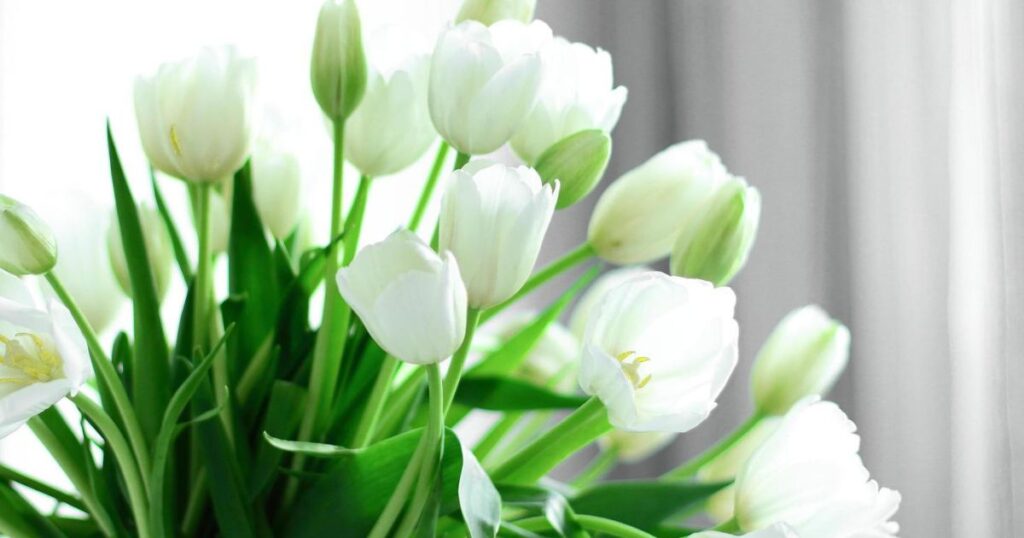
They honor the memory of those we’ve lost, providing solace and emotional release through acts of compassion. This tribute not only preserves their legacy but also guides us in embracing acceptance amidst our grief.
By reflecting on these symbols during moments of sorrow, we cultivate an environment where love triumphs over loss, nurturing a sense of peace that resonates through our hearts and communities alike.
Honor
Flowers transcend their aesthetic appeal, embodying deeper meanings of honor and respect. When gifted, they become a powerful symbol of admiration and solidarity, bridging emotional gaps between individuals.
Each bloom carries its unique message; a simple bouquet can convey profound sentiments that words sometimes fail to express.
In moments of grief, flowers take on an even more poignant role. They stand as heartfelt tributes to those who have passed away, softening the harsh edges of loss while honoring cherished memories.
For those left in mourning, these vibrant gestures provide solace, a reminder that love endures beyond physical presence. The act of giving flowers becomes not just a tribute but a shared experience that fosters connection during life’s heaviest moments.
Choosing the right floral arrangement can reflect personal stories and relationships, adding layers to the gesture. Whether it’s honoring a loved one or showing support for someone in need, flowers create dialogues that resonate deeply within our hearts. By embracing this timeless tradition, we celebrate life’s milestones and navigate through its sorrows with grace and empathy.
White Tulips Meaning In Love
Adorning the landscape of romantic expression, white tulips emerge as a symbol of true and eternal love, their delicate petals whispering promises of fidelity. Unlike other blooms that may drift through the seasons with fleeting allure, these blossoms embody an enduring purity and innocence that resonates deeply within the heart.
Couples often embrace their elegant simplicity, opting for white tulips in arrangements that convey profound emotions whether nestled gracefully in bouquets or as singular tokens reflecting heartfelt sentiments.
These enchanting flowers also serve as a reminder that love is not just an emotion but a commitment to cherishing one another over time. In a world where passion can sometimes feel transient, white tulips stand out as blushing reminders of devotion and understanding.
Their understated beauty invites couples to cherish shared moments while nurturing dreams for the future a timeless nod to both romance and companionship. As such, they capture not only fleeting feelings but an everlasting bond that flourishes with each passing day.
How To Use White Tulips In Your Flower Arrangement?
White tulips offer a stunning backdrop when combined with other blooms, each contributing its unique symbolism and emotional resonance. For instance, pairing white tulips with vibrant yellow daffodils can create a joyful display that signifies new beginnings and optimism.
This combination not only brightens any setting but also evokes feelings of hope and renewal, making it perfect for celebrations or springtime gatherings.
A Romantic Fusion: White Tulips and Red Roses
Imagine a bouquet of white tulips and red roses together, blending the purity of love with deep passion.
This stunning mix perfectly represents romance, making it a beautiful choice for special moments like Valentine’s Day or anniversaries, where every flower expresses heartfelt emotions.
Celebrating Joy: White Tulips and Yellow Daffodils
A joyful blend of white tulips and yellow daffodils creates a warm and vibrant display. The pure white tulips symbolize fresh beginnings, while the cheerful daffodils radiate happiness, making this combination perfect for celebrating life’s memorable moments.
A Touch of Elegance: White Tulips and Purple Irises
For a graceful expression of admiration, pair white tulips with deep purple irises. This elegant blend symbolizes respect and wisdom, making it an ideal choice for thank-you gifts or congratulations. This sophisticated arrangement ensures your message is both memorable and meaningful.
Other Tulip Flower Colors
Variety of tulip flowers with different unique colors and meanings are as under:
Red Tulip Meaning
Red tulips carry a profound significance that transcends their vibrant beauty. Often associated with love and passion, these flowers encapsulate the essence of romantic affection, making them a popular choice for expressing heartfelt emotions.

However, their meaning goes beyond mere romance; red tulips also symbolize deep respect and enduring commitment. This duality makes them particularly poignant gifts during moments of celebration or remembrance.
Yellow Tulip Meaning
Yellow tulips are often celebrated for their vibrant hue and cheerful presence, symbolizing warmth, happiness, and optimism. Beyond their aesthetic charm, they carry a deeper meaning that resonates with the human experience.
In various cultures, yellow tulips signify the arrival of spring, a time of renewal and new beginnings. This connection to rebirth encourages us to embrace change and look forward to brighter days ahead.
Black Tulip Meaning
The black tulip, with its deep, mysterious hue, evokes a sense of intrigue and allure that far surpasses the conventional associations of flowers. In a world filled with vibrant colors, the black tulip stands as a symbol of elegance and strength.
While often linked to the concept of mystery and unattainable beauty, it also embodies themes of new beginnings and transformation.
This duality offers a profound contrast: on one hand, it represents the darkness we all face, while on the other, it serves as an emblem for personal evolution.
Blue Tulip Meaning
The blue tulip, a captivating and rare bloom, carries a depth of meaning that transcends its stunning appearance. Traditionally associated with tranquility and peace, the blue hue evokes feelings of calmness and serenity. This makes it an ideal gift for someone going through tough times or as a symbol of harmony in relationships.
Beyond mere aesthetics, the blue tulip invites contemplation about the complexities of love; while many colors convey passion or affection straightforwardly, blue embodies a deeper yearning, a desire for understanding and connection.
Purple Tulip Meaning
The vibrant purple tulip is more than just a feast for the eyes; it embodies a rich tapestry of meanings that can resonate deeply with those who receive or cultivate them. Traditionally, purple has been associated with royalty and nobility, making the purple tulip a symbol of luxury and elegance.
This striking flower not only commands attention in gardens but also serves as an emblem of admiration and respect when gifted. It conveys sentiments that go beyond mere friendship, expressing profound affection and deep emotional connections.
Pink Tulip Meaning
Pink tulips are often seen as delicate messengers of love, affection, and care. Unlike their more intense red counterparts, pink tulips evoke a sense of sweet romance and gentle admiration.
Their soft hues symbolize tenderness in relationships, making them the perfect gift for someone special or even a way to express gratitude toward a friend. They can also represent joy and positivity, serving as a vibrant reminder that beauty often resides in simplicity.
Conclusion
White tulips hold a profound significance that transcends their delicate beauty, embodying purity, innocence, and external devotion. Historically cherished across cultures, they symbolize renewal and honor, making them a poignant choice for various occasions.
While white tulips radiate a sense of serenity, the vibrant hues of red, yellow, black, blue, purple, and pink tulips each convey distinct emotions and messages in floral arrangements.
Whether used in weddings or as thoughtful gifts, these flowers create an enchanting atmosphere that resonates with love and appreciation.
Embrace the symbolic power of tulips in your next floral arrangement or celebration and let their meanings enrich your connections with others.
What do White Tulips Mean in Love?
White tulips symbolize pure love and innocence in a relationship. They are often associated with a sense of new beginnings and heartfelt emotions.
Are Tulips Romantic?
Tulips are considered one of the most deeply romantic flowers. They symbolize perfect love and deep affection.
Are Tulips Male or Female?
Tulips are considered bisexual flowers because they have both male and female reproductive organs. This allows them to self-pollinate or cross-pollinate with other tulips, aiding in their reproduction.

